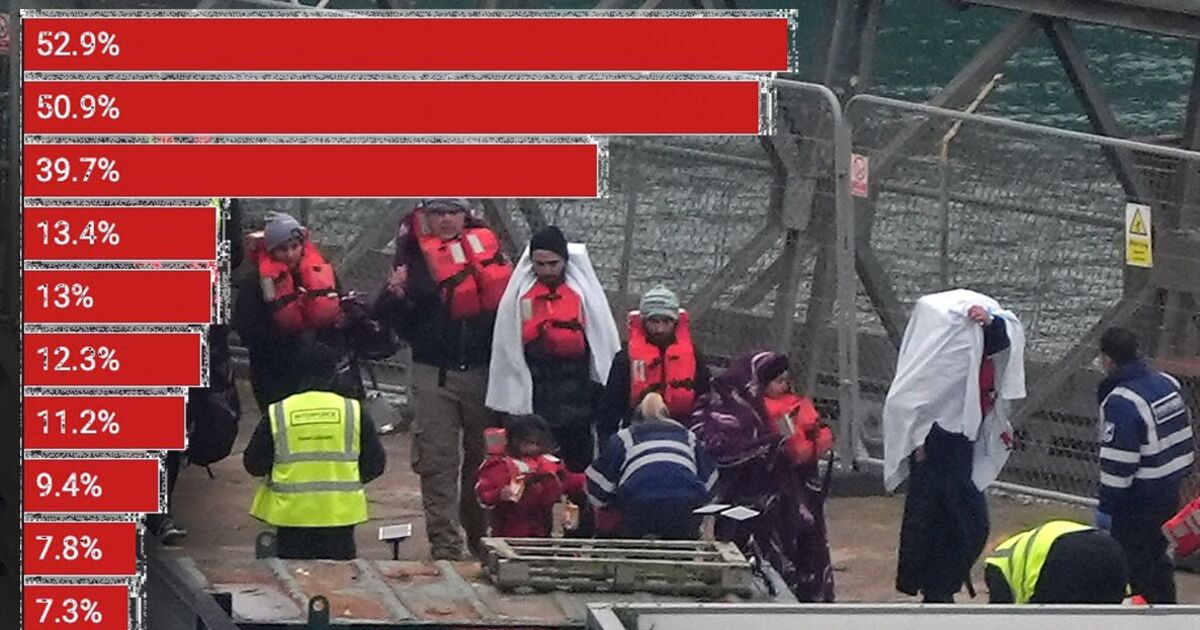Britain experienced the biggest surge in immigration of any rich country last year, according to the Organisation for Economic Co-operation and Development (OECD).
Some 746,000 “permanent-type” migrants moved to the UK last year, up from 488,400 in 2022, a new report by the Organisation for Economic Co-operation and Development revealed.
Britain issued more student visas than any other OECD nation, approving almost 450,000 applications last year. That was up by almost one fifth from 2019’s figure, though down by 6pc from 2022’s level.
The OECD said “family migration soared, with 373,000 new family migrants in 2023, a 60pc increase compared to 2022. Seventy per cent of family migrants in the United Kingdom were accompanying family members of labour migrants.
The report added: “The health and care visa for accompanying family members accounted for the bulk of the increase.”
Indians were the most common nationality among foreign-born people moving permanently to the UK in 2022, the OECD said. They were followed by Nigerians and Chinese.
Former Home Secretary Mr Cleverly banned overseas care workers and foreign students from bringing their family members with them to the UK.
The salary threshold for skilled workers was also increased to £38,700.
The previous government aimed to slash the number of people arriving in Britain by 300,000 a year with the measures.
But new Home Secretary Yvette Cooper has paused a planned increase in the salary threshold on those hoping to bring their family members to the UK.
This means foreign nationals will only need to earn £28,000 to bring their families to the UK.
Separate figures published by the Home Office showed reforms introduced by former Home Secretary James Cleverly are beginning to slash net migration.
The number of people applying to come to the UK on a health and social care visa has fallen by 83%.
And the number of people trying to join their family members while they study in the UK has dropped by 75%.
Shadow Home Secretary Chris Philp said: “The reforms put in place by our previous Conservative Government are clearly paying dividends, with migration coming down.
“Labour must not jeopardise that progress with an ideologically driven push to scrap those reforms.
“Doing so would open the floodgates to migration and undo the progress that has already been made.”
Figures published by the Home Office on Thursday morning revealed 17,400 people applied to move to the UK on a health and social care visa between April and October.
Last year, 103,200 applied to come to the UK on the same route.
Between April and October 2023, 94,800 people applied to join foreign students studying in the UK.
But this has fallen to 12,400 this year, analysis by the Daily Express shows.
Official figures published this week revealed a record seven million foreign-born workers are employed in Britain.
The number has rocketed by two million in the past decade following a surge in migration since the pandemic.
It has jumped from 4.8 million in 2014 and has more than doubled from two decades ago when the figure stood at 2.7 million.
The increase was driven by a rise in the employment of people born outside the EU, according to the Office for National Statistics (ONS).
This is up by 1.4 million since the end of 2019, just before the Covid pandemic broke out.
The number of EU-born workers plunged by 231,000 to 2.2 million over the same period.
It follows a surge in migration since the pandemic, which saw net inflows hit 764,000 in 2022 and 685,000 in 2023.
That was up from in the region of 200,000 per year pre-pandemic, amid a wave of post-lockdown migration, as well as arrivals from Ukraine and Hong Kong.
Overall, the number of workers born overseas has risen by 1.2 million since the pandemic from 5.8 million at the end of 2019.







